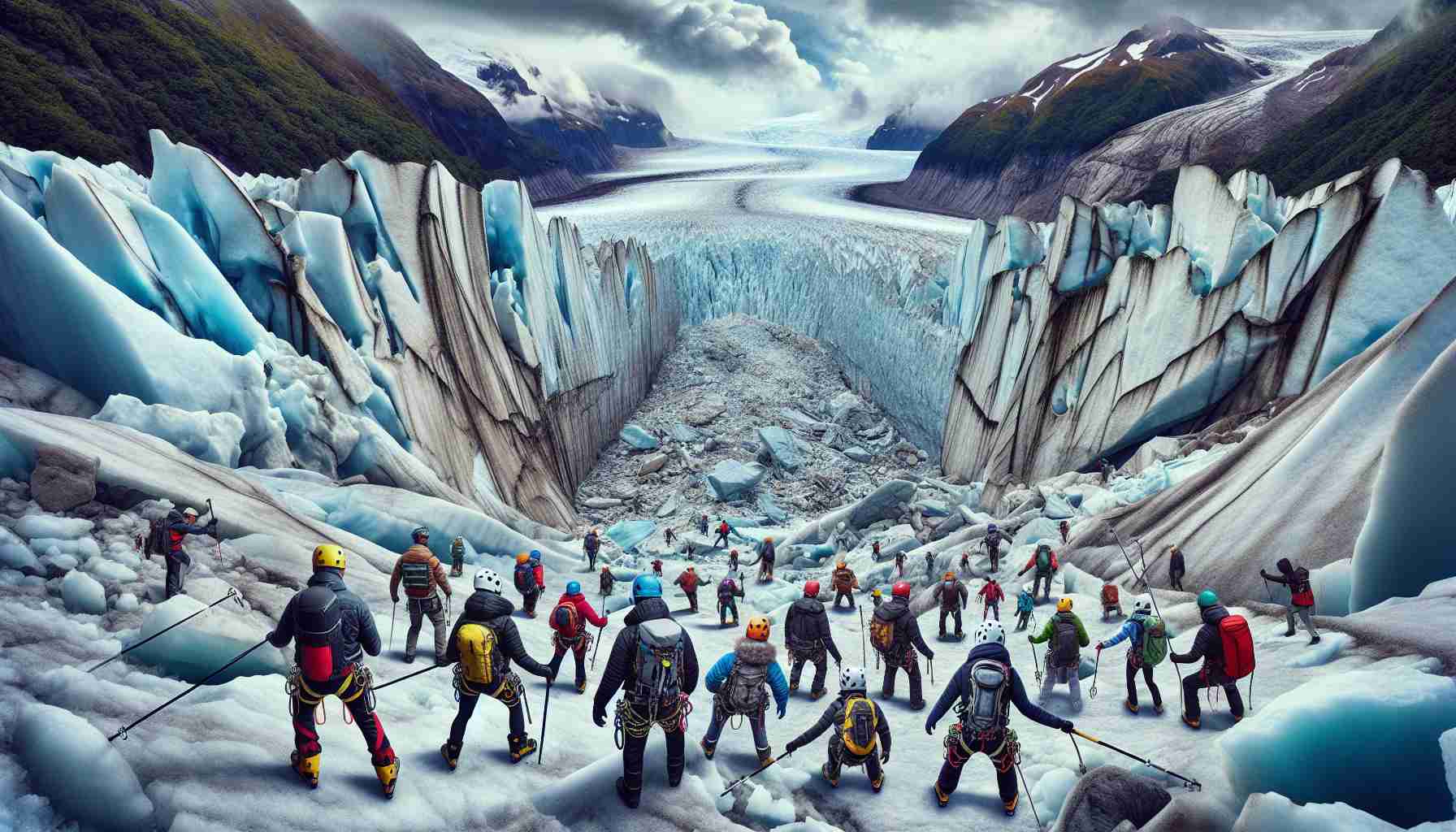
In recent years, the allure of glaciers has drawn tourists eager to experience these stunning ice formations before they potentially vanish. This phenomenon, driven by the urgency of climate change, has led to a significant increase in visitors who wish to experience glaciers firsthand, often with a sense of foreboding about their future.
On a fateful summer evening, a guide overseeing glacier tours witnessed a catastrophic event when massive chunks of ice broke free from Alaska’s Valdez Glacier. The following day, he encountered three victims in distress — two clinging to a canoe and another nearby, trapped by icy debris. Sadly, these individuals, tourists from Germany and Austria, were drawn to the mesmerizing azure ice without realizing its perilous implications.
As global warming accelerates glacier melting, these majestic structures become more hazardous. The instability of thinning ice presents an increased risk as larger chunks of rock and sediment shift unpredictably. Experts in the field acknowledge that despite guides’ commitment to safety, the evolving landscape presents challenges that can lead to unforeseen accidents.
Amidst the growing trend known as “last-chance tourism,” the risk of disasters continues to escalate. With glaciers retreating at alarming rates, thrill-seekers are confronted with the reality that while the ice may attract attention and adventure, it also carries grave dangers. As many tour companies strive for safety, experts predict that, as conditions become less predictable, the risk of tragedy will only grow.
The Rising Perils of Glacier Tourism: A Growing Concern
In the face of climate change, glacier tourism has surged in popularity, attracting adventure seekers eager to witness the beauty of these natural wonders before they disappear. However, as breathtaking as this experience may be, the dangers inherent in glacier tourism are escalating, raising pressing questions about safety, environmental impact, and adaptation to changing conditions.
What Are the Key Challenges Associated with Glacier Tourism?
The challenges of glacier tourism are multifaceted. As glaciers melt, they become increasingly unstable. This instability not only increases the risk of calving—where large chunks of ice break away from the glacier—but also raises concerns about unsafe walking conditions, crevasse formations, and unpredictable weather patterns. Furthermore, many glaciers are retreating at rates of up to 10 meters (about 33 feet) per year, drastically altering the landscapes tourists traverse. Tour operators must constantly reassess both routes and safety measures, making it difficult to ensure a secure environment for visitors.
What are the Environmental Implications?
The environmental impact of increased tourist activity on glaciers cannot be overlooked. The presence of people can lead to soil erosion, disruption of local wildlife, and pollution resulting from waste. Tourists draw resources from fragile ecosystems, potentially leading to further degradation of these beautiful yet delicate environments. Several regions are grappling with the decision to limit access to certain glaciers to protect both the natural beauty and the ecological integrity of these areas.
What Are the Advantages and Disadvantages of Glacier Tourism?
Advantages:
1. Economic Benefits: Glacier tourism provides significant revenue for local economies, offering jobs and supporting businesses in regions reliant on tourism.
2. Awareness Raising: This form of tourism can foster awareness about climate change and environmental issues, as visitors often leave with a deeper understanding of glacier dynamics.
3. Funding for Conservation: Profits from tourism can contribute to conservation efforts, helping to protect vulnerable regions and plan for sustainable tourism practices.
Disadvantages:
1. Safety Risks: The inherent dangers associated with ice travel can result in accidents, sometimes leading to loss of life, as highlighted in tragic incidents.
2. Environmental Damage: Increased foot traffic can lead to ecological damage, stressing the importance of sustainable practices that may not always be in place.
3. Dependence on Climate: As glaciers continue to melt, the very basis of glacier tourism is at risk, raising concerns about the long-term viability of this industry.
What Are the Future Directions for Glacier Tourism?
As climate change progresses, the future of glacier tourism seems uncertain. Tour operators are being urged to adopt sustainable practices, including limiting group sizes, using eco-friendly transport options, and providing educational resources to foster respect for these unique ecosystems. Additionally, some regions are beginning to implement regulations to manage tourist traffic effectively.
When striving for a balance between adventure and conservation, it becomes clear that understanding and mitigating the risks associated with glacier tourism is critical. Tourists must be educated on the realities of these environments, making informed choices that prioritize safety and sustainability.
For further information on environmental issues and tourism, visit World Wildlife Fund and National Geographic.



